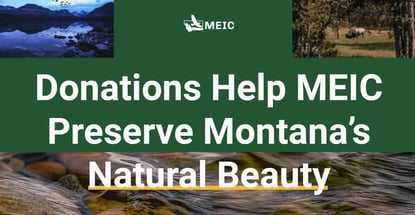
Our experts and industry insiders blog the latest news, studies and current events from inside the credit card industry. Our articles follow strict editorial guidelines.
In a Nutshell: Montana’s constitution guarantees Montanans the right to a clean and healthful environment. The Montana Environmental Information Center (MEIC) fights to ensure that constitutional right is upheld. MEIC works to combat pollution and promote clean and renewable energy sources. Member donations enable the organization to educate the public and influence policy. MEIC partners with its supporters to position Montana as a leader in adopting clean energy practices.
If you’ve ever found yourself gridlocked in traffic for an excessive length of time, you know what a frustrating experience that can be. Your patience diminishes while horns honk and exhaust fumes accumulate.
Or maybe you’ve had to bide your time in the crowded waiting room of a doctor’s office, doing your best to maintain sanity while attempting to inconspicuously dodge the germs bouncing around the room in pursuit of their next prey.
During these stressful moments, I find it beneficial to close my eyes and imagine I’m somewhere else. Somewhere peaceful, beautiful, and inspirational. My mind wanders to visions of undisturbed and majestic landscapes with soaring mountains, pristine lakes, and an assortment of radiant color juxtapositions. Meditating on this imagery restores me to a healthier state of mind.
The place I envision isn’t some imagined Xanadu or an amalgamation of Roger Dean paintings. It’s Montana.
Montana is a state of rugged natural beauty and countless idyllic vistas. The Montana Environmental Information Center (MEIC) is dedicated to keeping it that way.
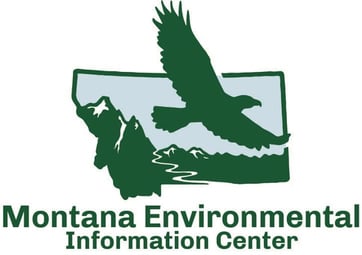
In 1972, the Montana Constitutional Convention convened to write a new constitution for the state. The state’s constitution includes a provision that guarantees residents the right to a clean and healthful environment.
MEIC was founded the very next year. Today, Cari Kimball is the organization’s Executive Director.
“Our constitution is very unique in providing the foundational right to a clean and healthful environment,” Kimball said. “But those words on paper are just that — words on paper. MEIC’s efforts involve bringing these words into action and ensuring our rights are actually being upheld.”
“Clean and healthful” were just words on paper and part of MEIC’s mission until 1999, when a Montana Supreme Court ruling in MEIC v. DEQ gave the right teeth.
Kimball said a primary focus of MEIC is to lobby the state legislature and other decision makers to pass and uphold environmentally protective laws.
“There’s a lot of work to be done to ensure that people’s health, our communities’ health, and the vibrancy of our wildland and all the places we love in the state of Montana are being protected,” she said.
Clean and Renewable Energy Benefits Everyone
Kimball said Montana has a long history of weathering environmental concerns caused by extraction industries, including hard-rock mining, which leads to acid mine drainage. She said that as the state is experiencing population growth, land-use planning and zoning continue to gain importance.
“We’re seeing a lot of people move to Montana, and we need to make room for them all while simultaneously protecting our open spaces,” Kimball explained. “Sprawl is really terrible for the climate. We encourage denser urban development, which protects our water quality and wildlife habitats while creating walkable and livable communities for Montanans to enjoy.”
Kimball said Montana has about one-fourth of the nation’s recoverable coal reserves, which is the most of any state in the U.S. Keeping those resources in the ground can protect Montana’s water and climate.
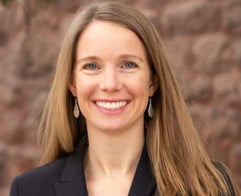
MEIC is working to combat pollution, including greenhouse gas emissions as well as the burning and extracting of fossil fuels, on multiple fronts within the state. The team makes a conscious effort to communicate the dangers of pollutants to state legislators.
Kimball spoke of an ongoing initiative that exemplifies the MEIC’s efforts and impact. Montana’s biggest utility provider recently released plans for generating electricity for consumers over the next 20 years. That plan, Kimball said, is almost entirely dependent on building new methane gas plants and investing additional capital in a coal plant.
Montana’s Public Service Commission has held a series of hearings to assess the plan. MEIC encourages its members to attend the hearings and voice their concerns. Individuals can also comment on this and other projects the organization supports through MEIC’s online action center.
“Not only are these fossil fuel resources expensive for consumers, but they’re harmful to the environment,” she said. “There are ways to provide energy that are more sustainable, such as harnessing the wind’s power. The technology for batteries to store energy is also rapidly advancing. The time is now to transition from fossil fuel dependence to clean and renewable energy.”
Community Action Propels the Mission Forward
Donations support MEIC’s efforts. Kimball said approximately 75% of the organization’s funding comes from individual contributions. Interested parties have multiple options for donating to MEIC, including annual donorship, monthly donorship, and one-time gifting.
MEIC is a membership organization with thousands of members in Montana and across the US. Membership enrollment is available to those who pledge an annual donation.
The majority of MEIC’s annual budget pays expenses related to staffing, including salaries. Its staff includes policy experts, communications personnel, and a staff attorney. Each MEIC team member brings unique talents and experiences to support the organization’s mission. Kimball said a common characteristic they all share is a deep appreciation of Montana’s environment and a commitment to preserving it.
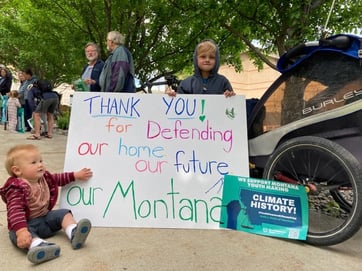
“We have a small yet mighty staff of nine full-time employees,” Kimball explained. “And there is no shortage of work to be done here. We don’t receive government grants — a lot of our work is holding government agencies accountable. We receive donations from $25 all the way up to five-figure sums, and it all helps. We’re extremely grateful for our members and all their support.”
Donations have paved the way for MEIC to add new members to the team, including a Campaigns and Advocacy Director and a Communications and Engagement Director. Kimball said these positions translate technical, esoteric information into more easily accessible and digestible content suitable for broader audiences.
“Through the efforts of these directors, we’re able to translate information that shows Montanans that there’s a better way to harness energy,” Kimball said. “We can use alternative, more affordable solutions with smaller greenhouse gas footprints.”
Montana Needs and Deserves MEIC’s Protection
Kimball classified much of MEIC’s work as long-term projects, adding that the organization has a substantial litigation portfolio. Some of the organization’s campaigns are projected to last upward of 20 to 30 years. While the team’s work is ongoing, Kimball said she has seen numerous incremental advances.
She described efforts that have kept fossil fuels in the ground and prevented the development of projects that could have harmed the community or a beloved landscape. She spoke with pride about these and other wins for the organization.
One metric MEIC uses to measure its impact is the number of supporters who take action to support the cause. Kimball said MEIC saw more than 86,000 actions taken through the website during a recent legislative session. These actions included sending emails to legislative committees as well as Montana’s Public Service Commission.
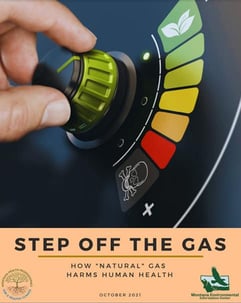
“Decision makers need to hear that Montanans really do care about what makes this state special and how we can help to protect it,” Kimball said. “We have huge potential to be a leader in renewable energy, and our relatively small population means we can have a substantial impact if our voices are heard collectively.”
MEIC provides educational resources on its website, including a regularly updated blog and accessible fact sheets. The staff participates in roadshows during legislative sessions and holds community events to educate the state’s residents about current issues. Kimball encourages supporters to sign up for action alerts to keep up to date on timely and impactful news.
“In my humble, unbiased opinion, I think Montana is just the most beautiful place on the planet,” Kimball said. “It really deserves our protection so that the people of the state, as well as visitors from around the world, can continue to appreciate its beauty. It’s worth fighting for, and I hope people will join us.”



![6 Credit Strategies to Help You Financially Prepare for the Holidays ([current_year]) 6 Credit Strategies to Help You Financially Prepare for the Holidays ([current_year])](https://www.cardrates.com/images/uploads/2019/10/Holiday-Credit-Strategies-Feat.jpg?width=158&height=120&fit=crop)

![3 Credit Cards For Kids & Ways to Help Them Build Credit ([updated_month_year]) 3 Credit Cards For Kids & Ways to Help Them Build Credit ([updated_month_year])](https://www.cardrates.com/images/uploads/2022/03/Credit-Cards-For-Kids.jpg?width=158&height=120&fit=crop)
![12 Ways Credit Cards Help Save on Vacations ([updated_month_year]) 12 Ways Credit Cards Help Save on Vacations ([updated_month_year])](https://www.cardrates.com/images/uploads/2022/05/Ways-Credit-Cards-Help-You-Save-on-Summer-Vacations.jpg?width=158&height=120&fit=crop)
